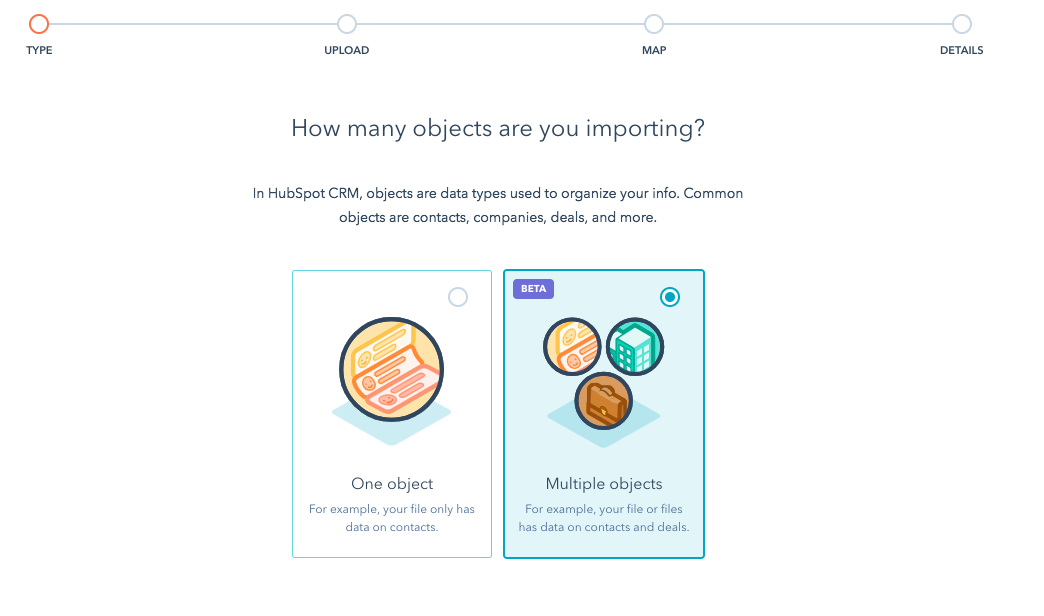There’s a story I’ve heard from a lot of marketers throughout my time creating sales content, and it goes something like this: “Kyle, I love your stuff, but I’m a marketer. I can’t get my sales team to take inbound seriously. How can I get them to pay attention?”

In early 2017, I got so fed up with the way sales departments were treating their marketing counterparts. So I set out to find companies where marketing and sales were totally aligned and figure out how they did it.
I filmed interviews with more than 25 business leaders to ask them how they got marketing and sales to work together, then I dug through the 15 hours of raw footage to look for common themes.
The pattern that emerged surprised me. Companies where sales and marketing work together tend to have a few things in common:
- Marketing and sales have shared goals and shared metrics of success.
- Marketing and sales are focused on a single, well-defined target market.
- Marketing creates content that drives sales forward, and sales participates in the content creation process.
- Marketing and sales have a shared customer database that acts as the single source of truth for both teams.
Goals, buyer definitions, content, and technology all fall under the umbrella of sales enablement, which is an up-and-coming discipline in the world of sales. The thing is, sales enablement is rarely seen as a marketing function. In most cases, it’s either housed in sales, or it's a fully independent role.
But what I realized is that, if the marketing department saw its primary goal as enabling sales success, then sales would view marketing as an ally rather than an annoyance.
So the goal of the Sales Enablement Certification was to teach inbound marketers how to use sales enablement strategies to win over their sales team. Our hypothesis was that, once the sales team came to trust the marketing team, they would be more open to hearing about inbound sales tactics.
Because of that, we didn’t want to tie the course to HubSpot tools. We believe that inbound and sales enablement are ideas that can be used by any company, regardless of whether they use our software. So we chose not to showcase HubSpot tools.
The downside is that HubSpot users who take the Sales Enablement Certification are left wondering how to connect HubSpot tools to HubSpot Academy training, and that’s caused a lot of frustration.
This blog post is a mea culpa and my first step toward reducing that frustration.
One important note before we get started: All the tool recommendations in this post assume you already have the strategies in place. No software in the world, HubSpot included, can replace the need for marketing and sales to meet together and create a unified strategy. If you haven’t done that, the techniques below will produce minimal results, if any. But if marketing and sales are unified, HubSpot tools can increase their effectiveness dramatically.
Goals and Metrics in HubSpot
The most basic part of sales enablement is having a revenue goal that marketing and sales are both eager to hit. Once you have that, you can define monthly goals for each team.
Marketing’s goal will be a certain number of marketing qualified leads (or, if you wanna get super fancy, a certain amount of lead value), and the goal for sales will be to contact each of those leads within a certain amount of time (for example, 24 hours). This two-way agreement is known as a sales and marketing SLA (service level agreement).
When it comes to tracking performance against these goals, a couple of basic HubSpot tools will help a lot:
- New Marketing Qualified Leads: This is a standard report you can add to your marketing and sales dashboards. It shows how many marketing qualified leads have been generated in a given period of time, which is a good place to start with holding marketing accountable to their goal.
- Became a Marketing Qualified Lead Date: This is a standard property in HubSpot. When a contact’s lifecycle stage gets set to Marketing Qualified Lead, this property automatically populates with the date of the change. You can combine this with the Last Contacted property to create a saved filter in HubSpot CRM that shows any contacts that have been an MQL for more than a certain number of days and haven’t been contacted yet. Ideally, this saved filter will always yield zero contacts, but if not, you’ll be able to follow up with the salespeople assigned to those leads.
Have more ideas on enforcing an SLA in HubSpot? Tweet it to me!
Buyer Definitions in HubSpot
One of the most lethal mistakes a company can make is allowing marketing and sales to target different markets. This is perhaps the most important area for marketing and sales to be aligned.
If the teams are aligned around a single revenue goal but are pursuing that goal in different markets, they’ll start a tug-of-war match that at best will reduce sales efficiency and at worse sink the entire company. And introducing marketing automation and sales acceleration tools into that environment will only expedite the company’s demise.
On the other hand, if marketing and sales are both focused on the same target market, HubSpot has a few ways to help with that focus.
First, the personas tool, which is included in all versions of Marketing Hub, even the free one. That means, if your company is using any HubSpot tool, they can use the personas tool. If your marketing and sales teams have a deep understanding of the types of people you’re trying to reach, you can create personas in HubSpot. Once you’ve done that, a wide world of opportunities opens up to you:
- In the forms tool (available in all versions of HubSpot), you can create a form for contacts to self-identify their persona. And that doesn’t mean they’ll just be presented with a list of persona names and have to pick one. You can ask them to select a description that best matches them or ask them about their role and then provide dropdown options that are mapped to your personas. This will help you quickly identify how well someone fits in your target market.
- If you have the lists tool (Marketing Hub Starter and above), HubSpot automatically creates an active list for each of your personas. You can then segment your contacts based on their persona and make sure all your marketing activities are targeted at the most relevant people.
- If you have workflows (Professional and above in either Marketing Hub or Sales Hub), there are lots of fun things you can do with personas, but two are especially exciting. First, you can create a workflow that will automatically set a contact’s persona based on the values they have in other properties. This way, as soon as the contact record has enough information to determine a contact’s persona, it’ll be set automatically. The other exciting thing you can do is use personas to trigger workflows so that contacts can automatically be treated in certain ways based on their persona.
- As your sales team filters their contacts in HubSpot CRM, they can use the personas property where they might otherwise have had to use a combination of several properties to hone in on the right set of contacts.
In addition to who a person is (their persona), it’s also important to know what their context is. Just because someone’s in your target market, that doesn’t necessarily mean that they’re ready to be contacted by your sales team. There are a couple of properties in HubSpot that help with this as well, and both are included in all versions of HubSpot:
- Lifecycle stage: Lifecycle stages help you organize your contacts based on the stage they're at in your sales cycle: subscriber, lead, marketing qualified lead, sales qualified lead, opportunity, customer, or evangelist. In many ways, lifecycle stage is just as fundamental as persona is. You can use the two together to triangulate when the right person is in the right context for you to contact them.
- Lead status: Brand new leads, whether they’re generated by marketing or sourced through the sales team’s own efforts, often fall into an awkward gray zone. They’re qualified enough for sales to be interested in them, but they haven’t taken enough action to warrant opening a deal. It’s easy for leads in this in-between phase to get lost or overlooked. Lead statuses help salespeople keep track of these leads and reach out to them appropriately. And the best part is, the individual statuses can be customized to meet the needs of your sales team.
Lifecycle stage and Lead status are helpful properties on their own, but combined together, they become extremely powerful. Here are a couple ideas:
- Even when marketing and sales are well aligned around a target market, marketing will occasionally qualify leads that sales decides aren’t worth pursuing. In many organizations, those leads get dropped and lost forever. But you can create a lead status such as “disqualified” or “not ready yet” or “rejected” that indicates sales is not going to pursue that lead right now, and you can use that to re-enroll that contact in your lead nurturing efforts.
- Salespeople are always sourcing new contacts. They might get a referral from somebody or meet someone at a conference. Afterward, they might look in HubSpot CRM and see that the person already has a record and that their lifecycle stage is somewhere before marketing qualified lead. You could have a lead status that would indicate the salesperson is having some preliminary conversations that may or may not necessitate changing the lifecycle stage later. This might turn off certain lead nurturing emails temporarily or pause other marketing activities while the salesperson explores the possibility of having a sales conversation. If it turns out the person isn’t ready for a sales conversation yet, the salesperson can adjust the lead status accordingly, and marketing activities can resume—all without the lifecycle stage having been disrupted.
Have other ideas about nailing down buyer definitions in HubSpot? Tweet them to me.
HubSpot as a Single Source of Truth
CRM technology has been around for a long time, and its value is well understood in most sales circles. But HubSpot CRM shouldn't just be the system of record for sales activities. Instead, it should be a shared system of record for marketing, sales, and customer service.
In many organizations today, each team has its own system of record: The marketing team has a marketing automation platform, the sales team has a CRM, and the customer service team has a ticketing system. These organizations will often have multiple records representing a single customer.
You can't effectively execute a sales enablement strategy if different teams are referencing different records for the same customer. Your CRM should function as the one source of truth for all your customer-facing teams. This way, whenever someone from your company interacts with a specific customer, they'll be able to see that customer's entire history. So even if they've never personally spoken with that customer, they'll be able to dive right into a conversation with them without having to start the relationship from scratch.
HubSpot CRM is designed to work as the hub for all your front office tools—even the ones that aren't built by HubSpot. That way, marketing and sales won't ever miss or double-hit individual contacts.
- The timeline: Every contact record in HubSpot CRM has a timeline showing all the interactions your organization has had with that person. Company and deal records have timelines as well. This means anyone in marketing or sales can see a contact's entire history, including visits to your website, content they've consumed, marketing communications they've received, and sales activities they've been involved in. With this level of transparency, there's no reason for any customer-facing employee to ever be unaware of a contact's situation.
- The Workflow Memberships card on the contact record: If your account has the workflows tool in it, this little box will appear on every contact record, indicating if the contact is currently enrolled in any workflows. Salespeople can reference this to see if a person they're working with is set to receive any automated emails. They can also use it to enroll a contact into a workflow, if there's a particular set of actions they'd like to automate. If the contact has already completed a workflow that doesn't allow re-enrollment, and if the salesperson tries to enroll the contact into that workflow a second time, the box will inform them that the contact has already completed that workflow. All this information helps ensure that sales and marketing aren't tripping over each other.
- HubSpot Connect: We have integrations with nearly 200 different software companies. Many of these integrations bring data from these tools into HubSpot, putting them on timelines and other places on your records. In many cases, they also make it possible to use these tools without leaving HubSpot. By making HubSpot the bridge between all your teams' point solutions, you can ensure that everyone is working in unity towards their shared goals.
I hope this helps you use HubSpot tools to execute your sales enablement strategy. If there's anything I've missed, or if you have any questions, you know the drill—tweet at me!










